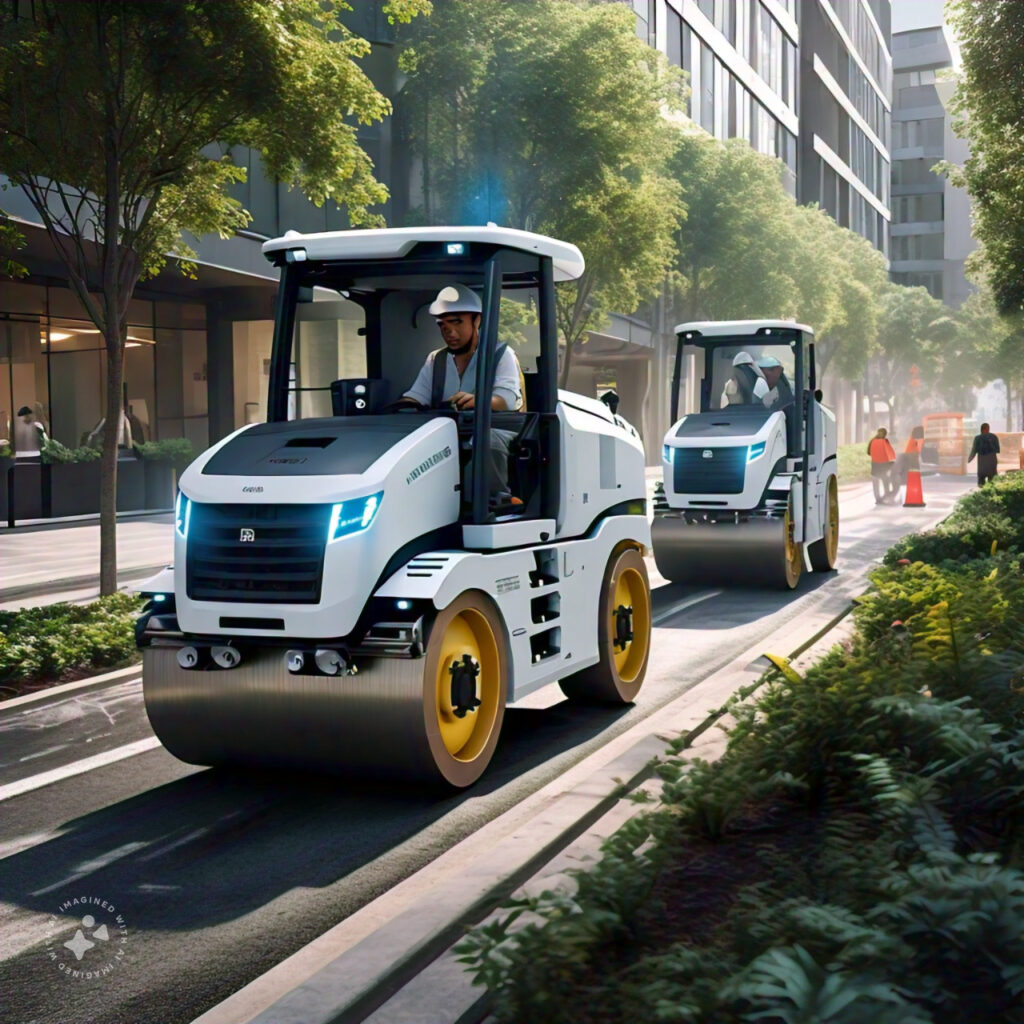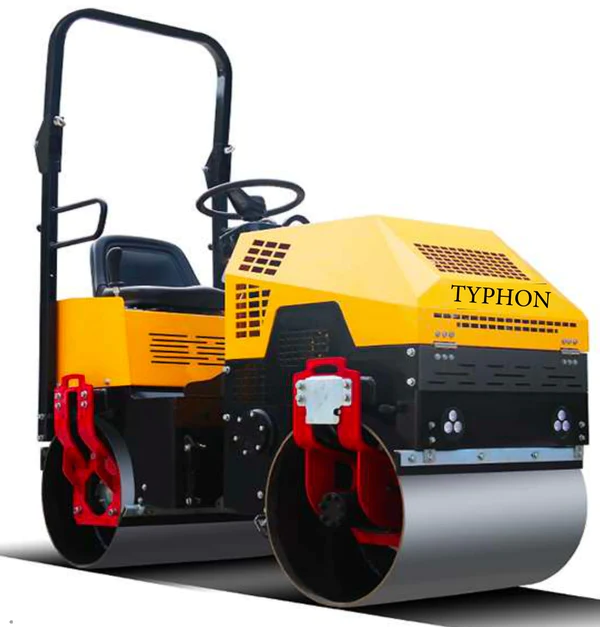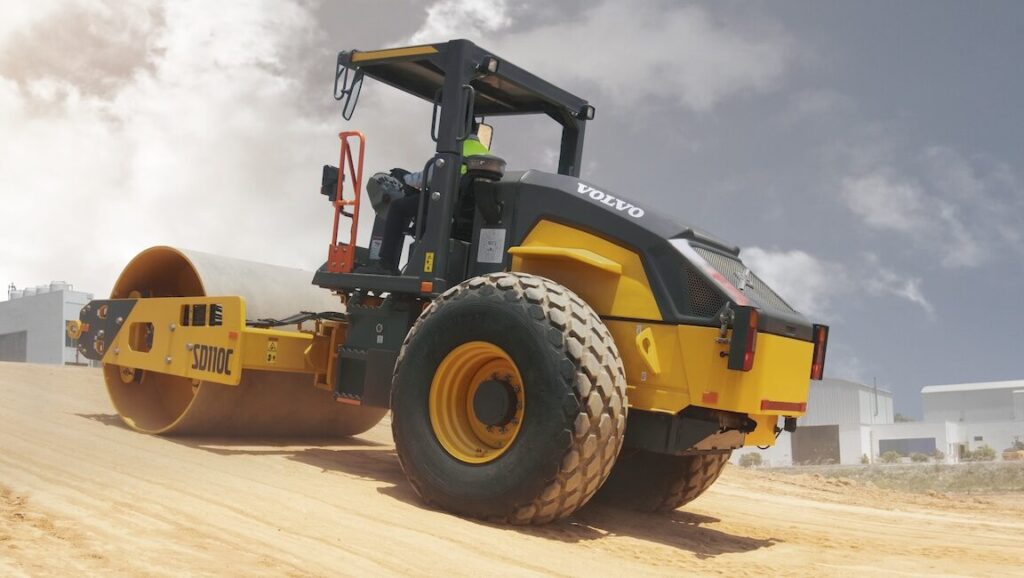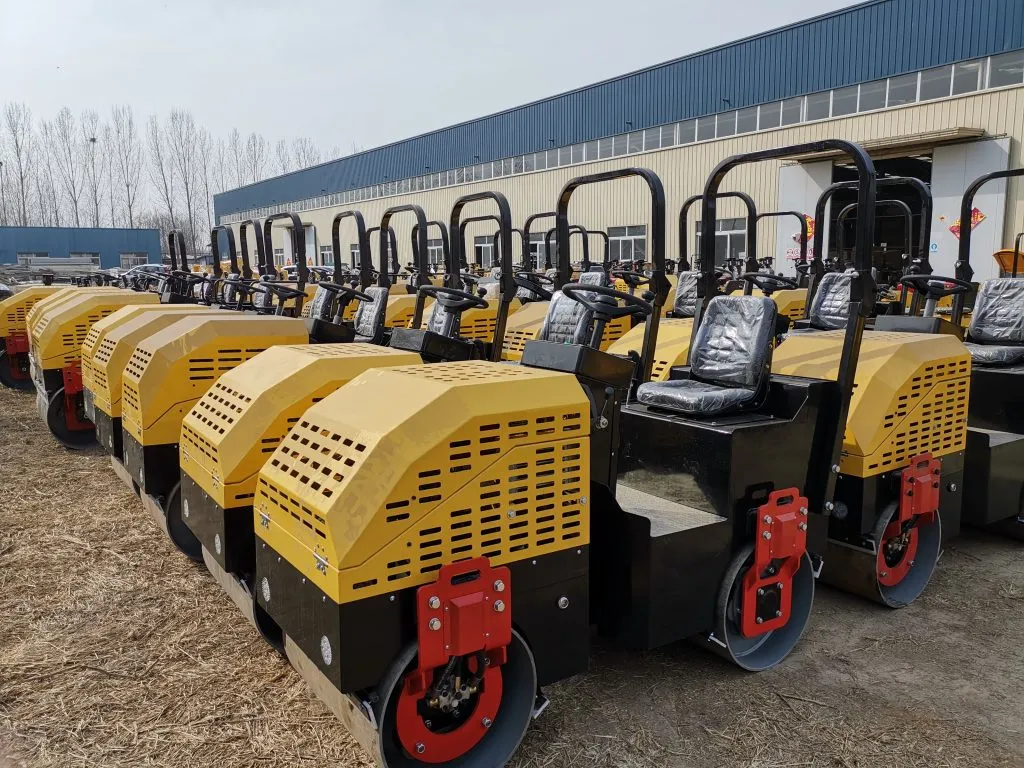As the construction industry is under increased pressure to give sustainability first priority, creative ideas that support environmentally responsible behavior become more crucial than ever.
Why should one look for environmentally friendly roller-compactors?
Reaching long-term environmental objectives depends on the sector accounting for a significant share of world carbon emissions, mitigating the environmental effect. From builders to environmentalists and civil engineers, more and more people are seeking creative ideas and technologies that promote sustainable development without sacrificing performance or economy.
Let’s examine how Roller Compactors enable sustainability:
- Roller compacts as green building champions
- Revolutionizing soil compaction technology will help to increase project efficiency, thereby enabling much lower carbon impacts of construction projects.
- Modern Technology and Ecological Design
- Encouragement of construction industry development in accordance with environmental respect, including modern engineering employing environmentally friendly equipment design.
- Building Sustainable Development and Innovation in Construction
- Encouraging innovative, eco-friendly technical solutions; Setting new standards for environmentally friendly construction methods
The following sections will address seven main ways roller compactors are redefining sustainability in construction; energy-efficient rollers will be highlighted; effective strategies for carbon footprint reduction will be discussed; and new equipment developments opening the road for a better future will be covered.
Let’s look at the best 7 ways for an environmentally friendly roller compactors:
1. Design of environmentally friendly machinery
The design of roller compactors has evolved significantly to suit a construction industry that is more environmentally friendly. Modern tools of today sometimes have innovative components such as better fuel efficiency, alternative energy sources, and noise-reducing devices. Different businesses have created hybrids.
For Example: Integrating electric motors with traditional diesel engines—for which this combination not only lowers fuel consumption during soil compaction operations but also carbon gas emissions. While operational efficiency is maintained, investing in environmentally friendly equipment design might help companies reduce their entire environmental impact. These developments are becoming important for more and more construction projects aimed at reaching environmental objectives.
Advantages of constructing environmentally friendly machinery:
- Enhanced Worksite Safety and Air Quality: Quieter operations contribute to safer work environments. Lower emissions improve air quality, benefiting workers and the surrounding community.
- Financial Benefits: Reduced operating expenses align with the financial goals of construction companies. Cost efficiency helps companies maximize budgets and meet corporate obligations.
- Leadership in Eco-Friendly Equipment: Companies like Volvo, JCB, Roller Compactors, Typhon Machinery, and Caterpillar have eco-friendly compactors with a range of electric-powered equipment.
- Trend Towards Sustainable Building Practices: Growing emphasis on integrating sustainable methods across construction stages. Demonstrates how environmental awareness can align with performance and productivity.
- Potential for Positive Change: Business leaders prioritizing eco-conscious designs drive significant industry progress. New roller compactor models with green technology underscore their role in sustainable engineering.
- Commitment to Innovation and Sustainability: Continuous advancements reflect the construction sector’s creative capabilities. Highlights dedication to environmentally friendly practices at worksites worldwide.
2 Energy Efficiency Designed Rollers
Energy-efficient rollers are changing the field of environmentally friendly building possibilities. These devices reduce energy consumption using contemporary technologies, therefore enhancing soil compaction process performance.
Modern rollers may, for example, have smart hydraulics that maximize power use according to real-time compaction needs and variable-frequency drives. Along with greatly lowering fuel costs and greenhouse gas emissions, this increases efficiency.
Energy-efficient roller compactors provide various advantages:
- Creative Roller Compactor Technologies: Recent advances in roller design mostly focus on incorporating technologies that automatically detect ground conditions and change settings in accordance. These advances provide the correct force application, thereby reducing too high energy consumption and enabling a sustainable approach to construction activities.
- Energy-Efficient Rollers in Action: One very fascinating case study was a civil engineering project employing energy-efficient rollers supplied with onboard monitoring systems. This project demonstrated a 30% decrease in fuel usage over conventional rollers, therefore demonstrating how technology may inspire environmentally responsible construction methods.
- Sustainable Approach of Green Build Construction: On a site under administration by Green Build Construction, energy-efficient rollers were used for an urban infrastructure project. Setting a new record in the industry for giving energy-efficient heavy machinery first priority, the change from traditional equipment to advanced, environmentally friendly alternatives considerably lowered running expenditures and carbon emissions.
- Sustainability Through Innovation: Roller compactors are becoming more crucial in sustainable construction by emphasizing energy economy. As environmentally friendly solutions have more and more importance, these developments highlight the creative capacity of the construction industry toward a brighter future.
- Industry Player Call to Action: As this technology evolves, companies are advised to invest in these innovative solutions that provide better performance with least environmental effect. These type of expenses show a commitment to sustainability as well as operational effectiveness.
3. Reduction of the Carbon Footprint
Roller compaction is under increasing and more pressure to help the building sector reduce carbon emissions. Using current technology and creative ideas can help contractors drastically lower the carbon footprint associated with soil compaction operations. Using hybrid or totally electric roller compactors helps one to run more effectively and helps to lower dependency on fuels. Many industries are beginning to appreciate energy-efficient technologies that not only operate well but also lower greenhouse gas emissions.
Example: Companies like Roller Compactor, Typhon Machinery, Caterpillar and Volvo have progressed by developing models meant to not only improve performance but also drastically reduce their harmful emissions. These advancements show how crucial equipment might be to satisfy environmental needs while still producing goods on work sites.
Advantages of reducing carbon footprints:
- Alignment with Sustainable Objectives: Reducing carbon footprints aligns rather well with the goals of environmentally friendly building methods. Companies aiming for certifications like LEED (Leadership in Energy and Environmental Design) find significant applicability in contemporary roller compactors.
- Role of Intelligent Compaction Technology: Why Intelligent compaction technology in roller compactors serves to lead industry in carbon reduction. This technique uses real-time data processing to allow operators maximize compaction efforts, conserve fuel usage, and run meaningless runs off.
- Verified Environmental Impact: When compared to more traditional methods, intelligent roller projects reduce CO2 emissions by up to 30%, according to case studies. This shows a good intersection of environmental concern with technical inventiveness.
- Indispensable Role of Roller Compactors: Roller compactors become indispensable tools for reaching tight climate targets as sustainability takes top priority in construction. These advanced tools find their place in modern building techniques as they reduce pollution and improve efficiency.
- Enhanced Industry Reversals: Employing innovative equipment designs not only advances individual business goals but also supports industry-wide efforts to slow down global warming. These technologies help the building sector to go towards a sustainable and effective future.
4. Soil Compaction Techniques
Modern soil compaction methods are changing the scene of environmentally responsible building. These developments greatly minimize environmental effects even if they improve efficiency and efficacy in achieving ideal soil stability.
For example, modern technologies limit disruption of the surrounding ecosystems by being designed to provide continuous density with less energy input and lowered vibration levels. By reducing the possible soil erosion and noise pollution during building, this helps to increase the local biodiversity. Moreover, better precision in soil compaction lowers needless material consumption, thus lowering the transportation emissions connected with transferring extraneous earth resources.
Advantages of Modern Techniques:
- New techniques aimed at improving job quality include vibratory compaction and intelligent compaction.
- These approaches help to promote efficiency by means of waste reduction and resource consumption reduction.
- Intelligent compaction guarantees best performance throughout the compaction process using real-time data analytics.
- These creative solutions offer considerable environmental benefits, therefore reducing the impact of building projects on the ecology.
5. Advocacy of environmentally beneficial building methods
Roller compactors are fundamental tools used in green construction techniques, as they also help to create more ecologically friendly building techniques. These machines provide ideal soil compaction, which lays a firm platform maximizing structural integrity and reduces resource consumption. By using roller compactors, one lowers the possibility of future ground settling problems, therefore lowering the need for extra materials and energy used in repairs or reinforcements.
Advantages of employing small, ecologically friendly compressors:
- Roller Compactors for Green Buildings: Green building roll-on compactions Using roller compacts saves time and lowers the project expenses. Better quality outputs and speedier construction schedules result from good soil compaction.
- Environmental Advantages and Efficiency: Advanced roller technology users claim lower material waste, higher output, and reduced carbon impact, therefore improving efficiency and environmental advantages. This is in line with LEED (Leadership in Energy and Environmental Design) stated environmental objectives.
- Worldwide acceptance of better construction techniques: Roller compactors promote efforts aimed at promoting green building all around. In events like World Green Building Week, which emphasize energy-efficient solutions, governments and businesses are proving how such instruments enhance environmental results.
- Eco-Friendly Constructions: As part of environmentally friendly construction methods, roller compactors are being used in the building industry more and more. This change fosters a society of long-term environmental responsibility and sets limits for forthcoming green initiatives in urban development.
6. Advancements in the construction sector
Roller compactors’ design and efficiency are fast transforming the building sector. Recent developments have made these environmentally friendly powerhouses fit to raise project efficiency and reduce environmental effects possible.
For example, companies like Volvo, JCB, Roller Compactors, Typhon Machinery, and Caterpillar are including creative telemetry systems with fuel efficiency and real-time machine performance. By helping contractors to maximize roller compactor utilization, this degree of understanding helps to save resources and reduce emissions on project sites.
Advantages of developments in the building industry:
- Alternatives of hybrid and electric power: These days, modern roller compactors come in hybrid and electric models with much less fuel use. Combining conventional engines with lithium-ion batteries provides a sustainable substitute free of compromise in performance or power.
- Automation and AI Integration: As onboard sensors let equipment adapt to various soil conditions, roller compactors are propelled toward artificial intelligence and automation. This change results in autonomous rollers, therefore increasing precision and lowering building company labor expenses.
- Eco-Friendly Advancements: As global environmental standards become stronger, the construction industry is concentrating on ecologically friendly substitutes such as roller compactors. These projects aim to simultaneously lower the running economy and carbon emissions.
- The Future of Sustainable Construction: As manufacturers concentrate on green technology and innovative ideas, roller compactors are allowing a more sustainable and efficient future in building. These findings imply a day when environmentally friendly construction methods will be the standard.
7. Finally, employing roller compactors, directing the road of ecologically responsible construction:
All things considered, roller compactors are really important in orienting the building industry toward the environment. These devices help to reduce carbon footprints by combining energy-efficient technology with environmentally friendly equipment design, therefore considerably advancing green building methods.
The advancements in soil compaction methods increase efficiency and also suit more general aims for ecologically friendly engineering solutions. Sector leaders continue to support the developments in roller compacts, therefore proving the value of environmentally friendly technology.
Most clearly, this sector requires constant innovation and acceptability. By means of building experts’ analysis of new equipment advancements, standards and support group initiatives aiming at a better future may be developed. Including roller compactors into a whole sustainability strategy influences not just particular projects but also global initiatives aimed at environmentally friendly construction methods.

